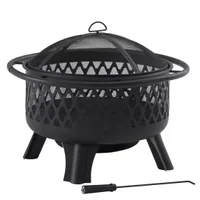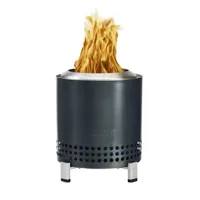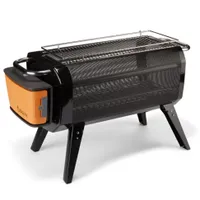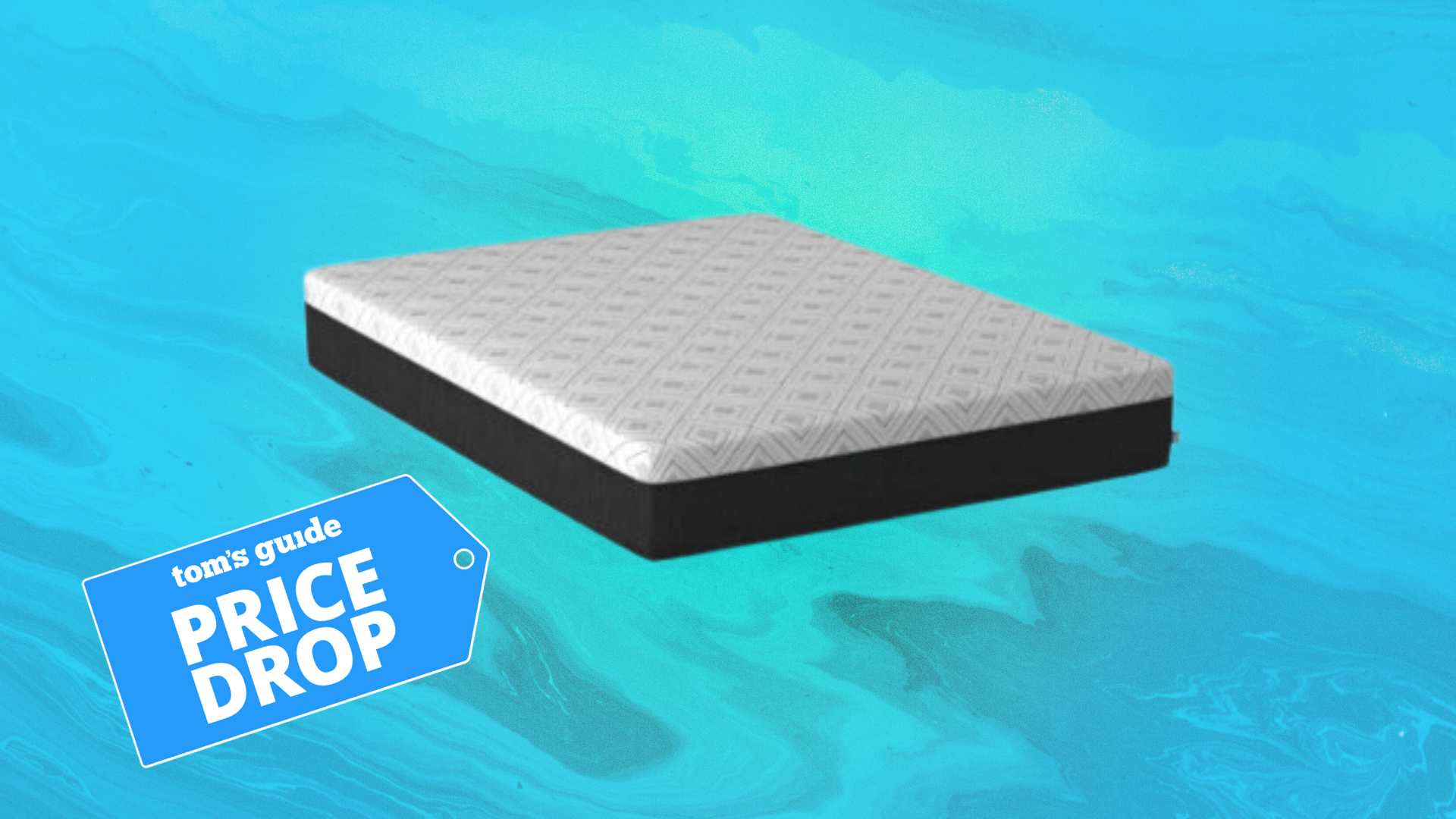Best fire pits in 2025: Tested and rated
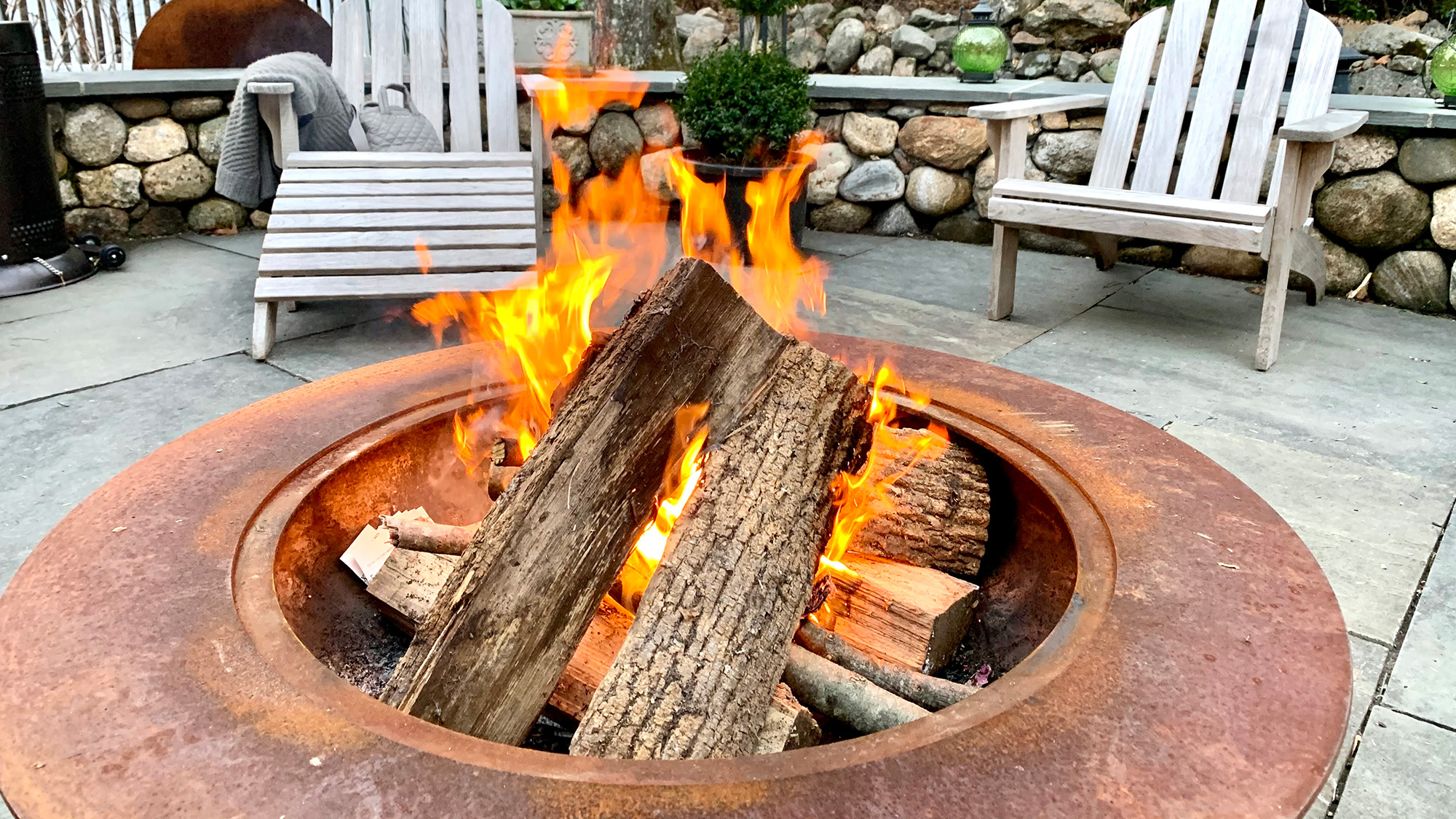
Whether you're hosting a party, camping, or simply want to add warmth to a patio, there’s nothing like sitting around one of the best fire pits. But how do you know which one is right for your yard?
That's why we asked expert Rich Woodbridge to test dozens of the best fire pits on his family farm. Rich is the perfect person to test these fire pits; he is an experienced camper, an Eagle Scout, and best of all, a former cookstove product designer. Trust us, he knows exactly what makes for a good fire pit.
Each fire pit was evaluated several times using the same type of firewood and fire-starting techniques.
If you're after a top smokeless pit, Rich highly rated the Solo Stove Bonfire 2.0 for durability and design. For a more traditional fire pit, Rich loved the Amazon Basics pit for its fair price and easy operation.
To help you decide, here's our selection for the best fire pits to suit every home, lifestyle and budget.
Quick list
Here are our best smokeless and traditional fire pit picks based on our comprehensive testing and expertise.
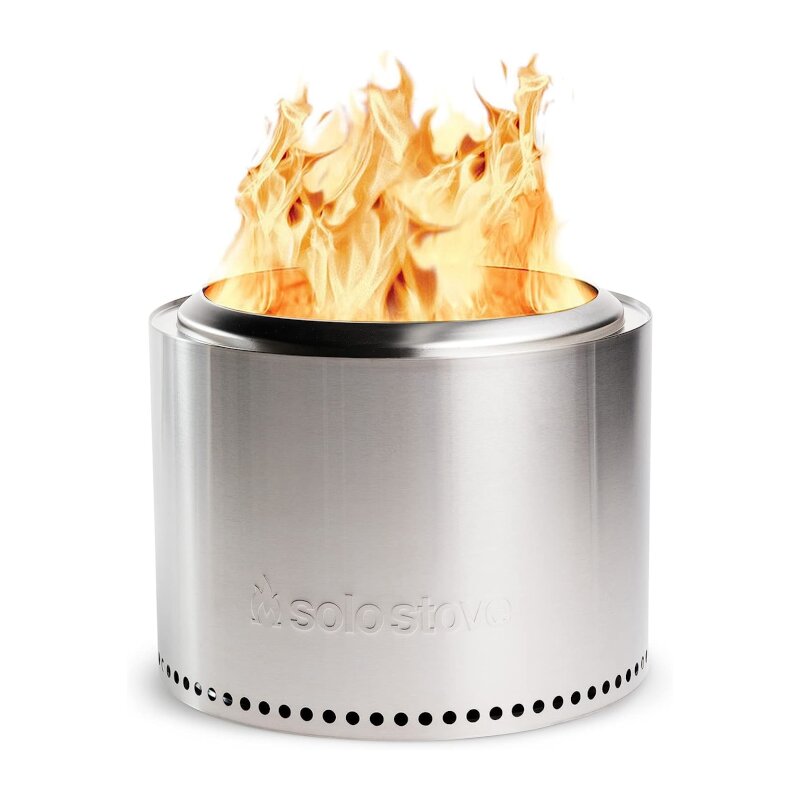
The Solo Stove Bonfire is the best smokeless fire pit Rich tested. Its stainless steel design, allows great airflow for a steady smokeless burn. Easy to assemble, it also comes with a handy, removable ash tray to make cleaning a breeze. It also has a lifetime warranty.
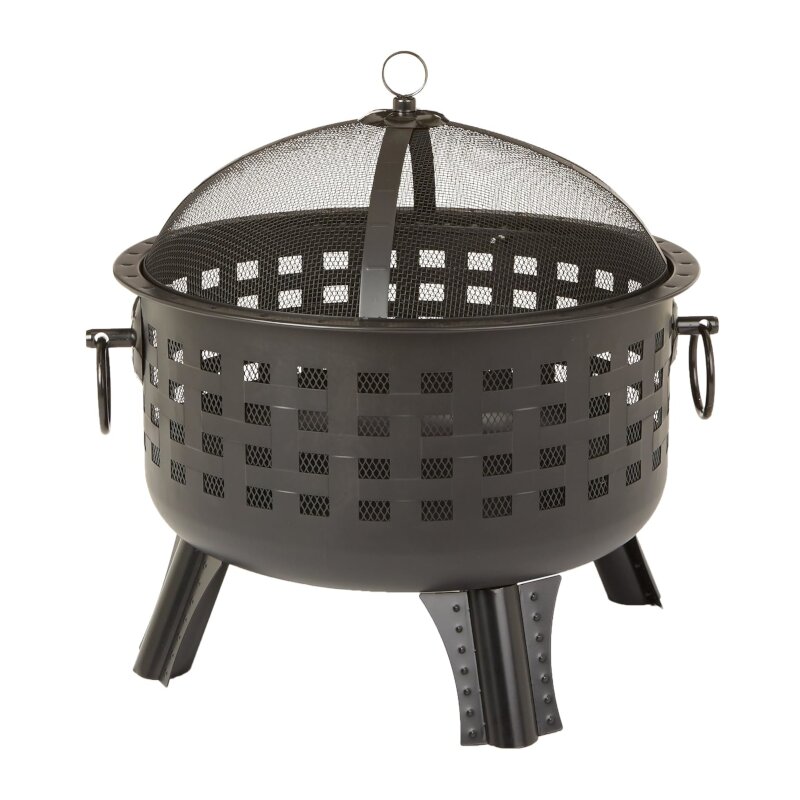
If you're after a basic fire pit, that is compact, this will get the job done. It's lightweight, easy to assemble in just minutes, the fire was quick to light. It also has convenient carry handles to move around, and a mesh screen cover.
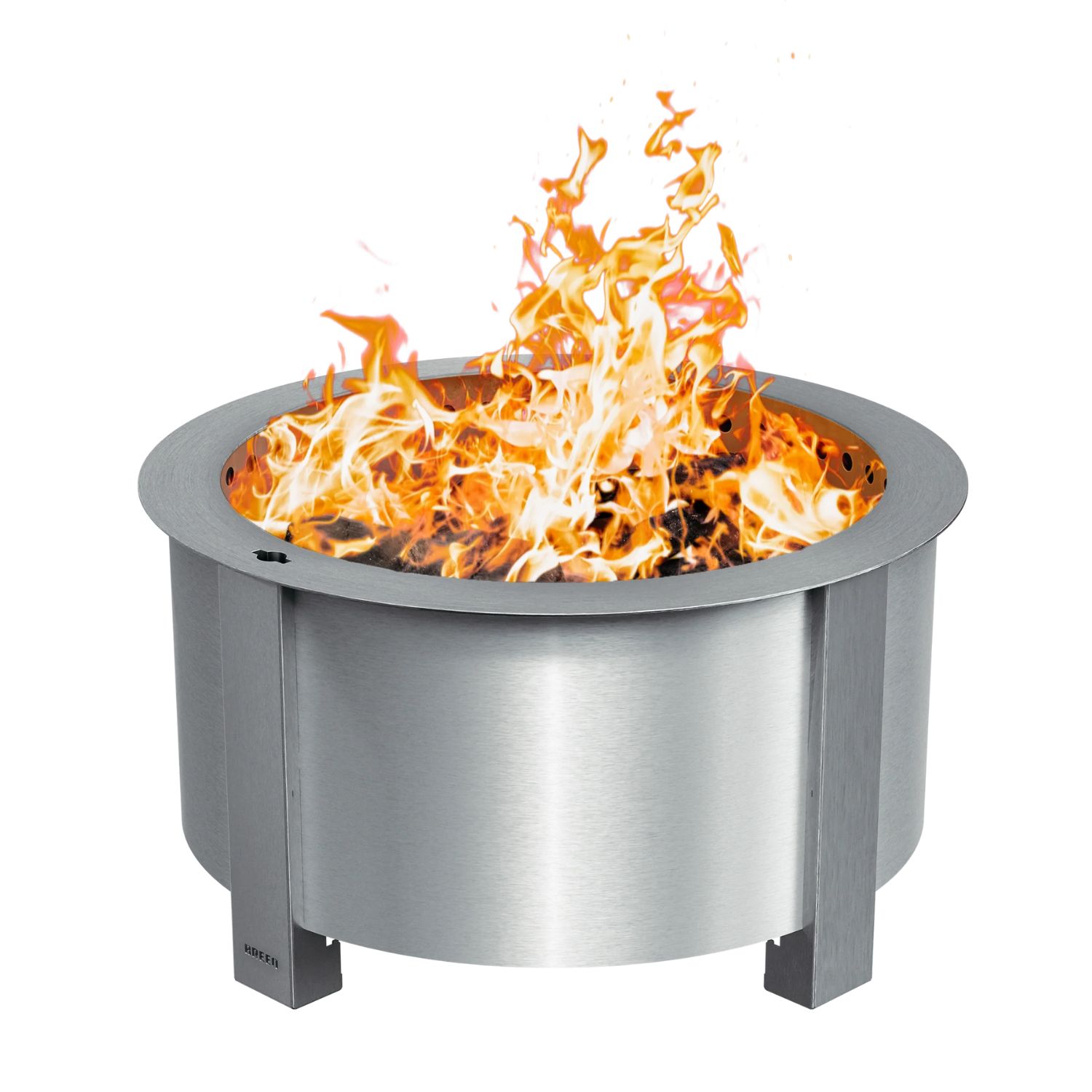
The Breeo X24 is a sturdy, stable fire pit. It has the most accessories of any of the pits tested, so it's incredibly versatile. It's smokeless, insanely powerful, and capable of throwing off a lot of heat while still being very user-friendly.

With its unique bowl-shaped design, the Cuisinart fire pit is easy to use when it comes to reaching in to light the fire. What's more, heat can be felt sitting over 6 feet away, offering a cozy experience to sit around. Ideal for hosting evening, outdoor gatherings.
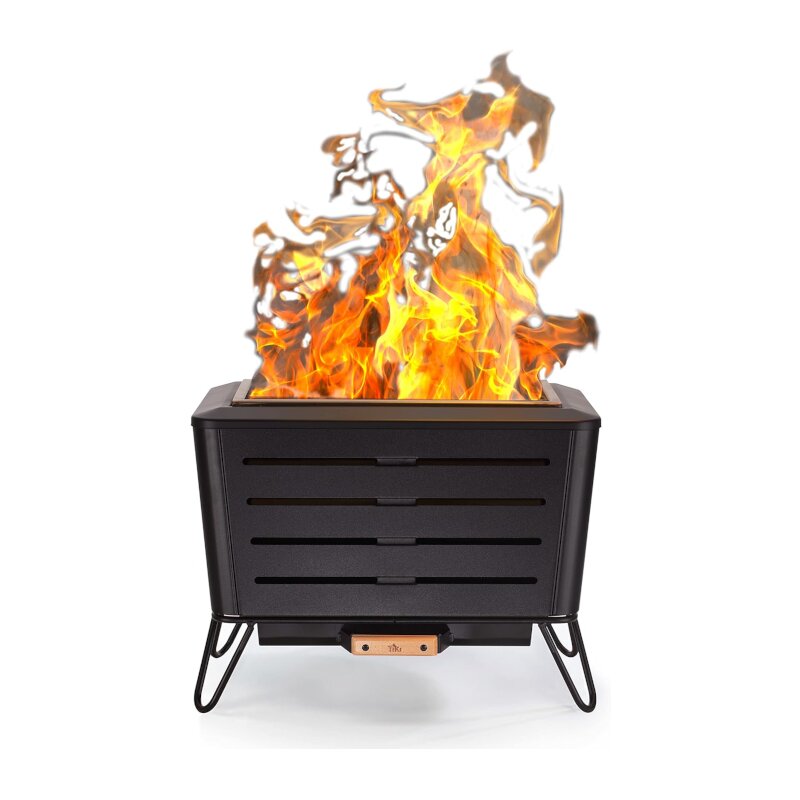
If you're after something more portable, this Tiki is a great option. Its compact, rectangular design, makes it look stylish, and it comes with a removable ash tray and convenient handles. Built with a 16-gauge stainless steel interior and powder-coated exterior, this fire pit is both durable and sturdy.

For those after a more traditional fire pit, at an affordable price, the Bali Outdoors is a great option. With its sturdy build, it has a 32-inch diameter interior that holds a lot of wood and offers a cozy amount of heat. It also comes with an adjustable grilling rack.
Read More
Meet our experts

Rich is an experienced farmer and owns and runs McCollum Orchards, which has been in his family for 200 years. He took on the farm with his wife, Bree, in 2011. Working on the farm full-time, with his wife, Rich has vast experience in testing products for Tom's Guide, including products from fire pits to gardening gloves. His manual dexterity and practical insight enable him to comprehensively test and review products to see if they make the grade. McCollum Orchards is an organic fruit, vegetables, and flower farm on a 100-acre site.

I’m a staff writer on the homes team at Tom’s Guide, and apart from covering all things inside the home, I also take care of our exterior content. Part of this includes writing garden features and overseeing our outdoor buying guides covering solar lights, patio heaters, pruning shears, inflatable hot tubs, and fire pits.
Best fire pit overall
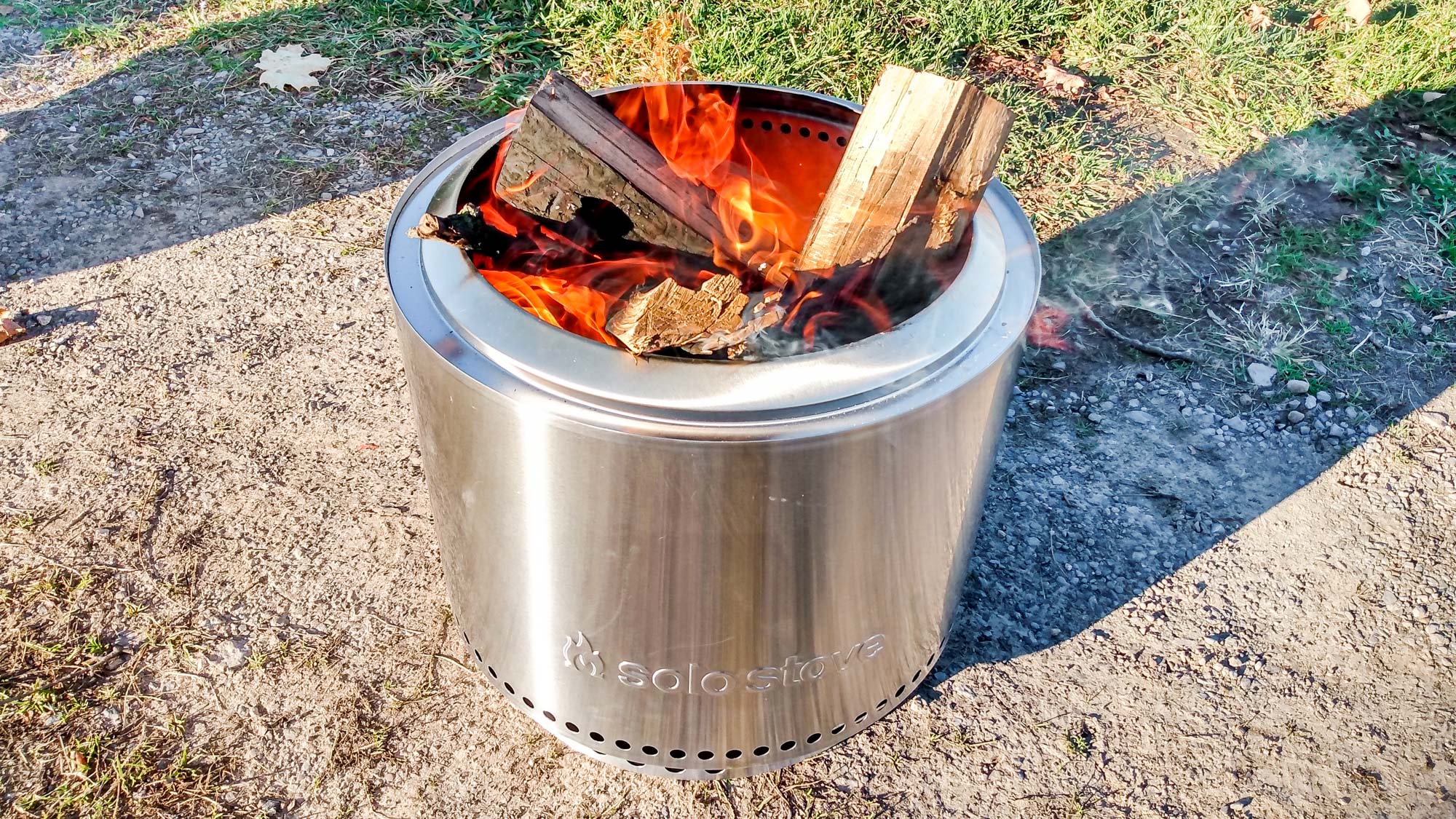
1. Solo Stove Bonfire 2.0
Our expert review:
Specifications
Reasons to buy
Reasons to avoid
As a smokeless fire pit, the Solo Stove Bonfire 2.0 offers everything you need and more. It has a sleek design, great airflow for a nice smokeless burn, and is very easy to clean after each use. It was the only smokeless fire pit in Rich's tests that had both a removable ash pan (the metal grate the logs sit on) and a removable ash tray located below the pan. Rich found that this made the Solo Stove Bonfire 2.0 the easiest fire pit to clean, which is one of the reasons why it takes the top spot as the best fire pit.
Rich found the Solo Stove Bonfire 2.0 incredibly simple to assemble, taking less than a minute; just rest it on its base and flip over the fire ring on top. It had clear instructions, and he was able to build a nice, controlled fire very easily. It produced very little smoke and sparks, and after half an hour, the fire burnt down to the perfect point for roasting marshmallows.
Unlike other fire pits that may reserve stainless steel for only the inner burn chamber, the Bonfire 2.0 is entirely constructed out of corrosion-resistant stainless steel. This results in a sturdy and quality product. In fact, Solo stove is so confident in the design and durability that it offers a lifetime warranty with each fire pit.
Like most smokeless fire pits, the Solo Stove Bonfire 2.0 is not designed to be permanently left outside. There are no built-in handles and the smooth stainless steel design can be slippery when moving. However, it comes with its own canvas travel bag and at just over 23 pounds, it is relatively easy to pick up. The included stainless-steel stand fits and supports well, lifting the fire pit off the ground by a few inches. Overall, he was very impressed with this fire pit, and could find little to complain about. It should provide years of backyard entertainment.
If buying cords of wood is not your thing, Solo Stove also sells a wood pellet adapter for its fire pits; this perforated metal plate sits inside the stove, and lets you pour in pellets to keep the fire going.
What's more, if you're not adept at lighting fires, you might prefer Solo Stove's latest offering — the Solo Stove Summit 24. The design is based around using a starter gel to make igniting the fire easier.
Best budget fire pit
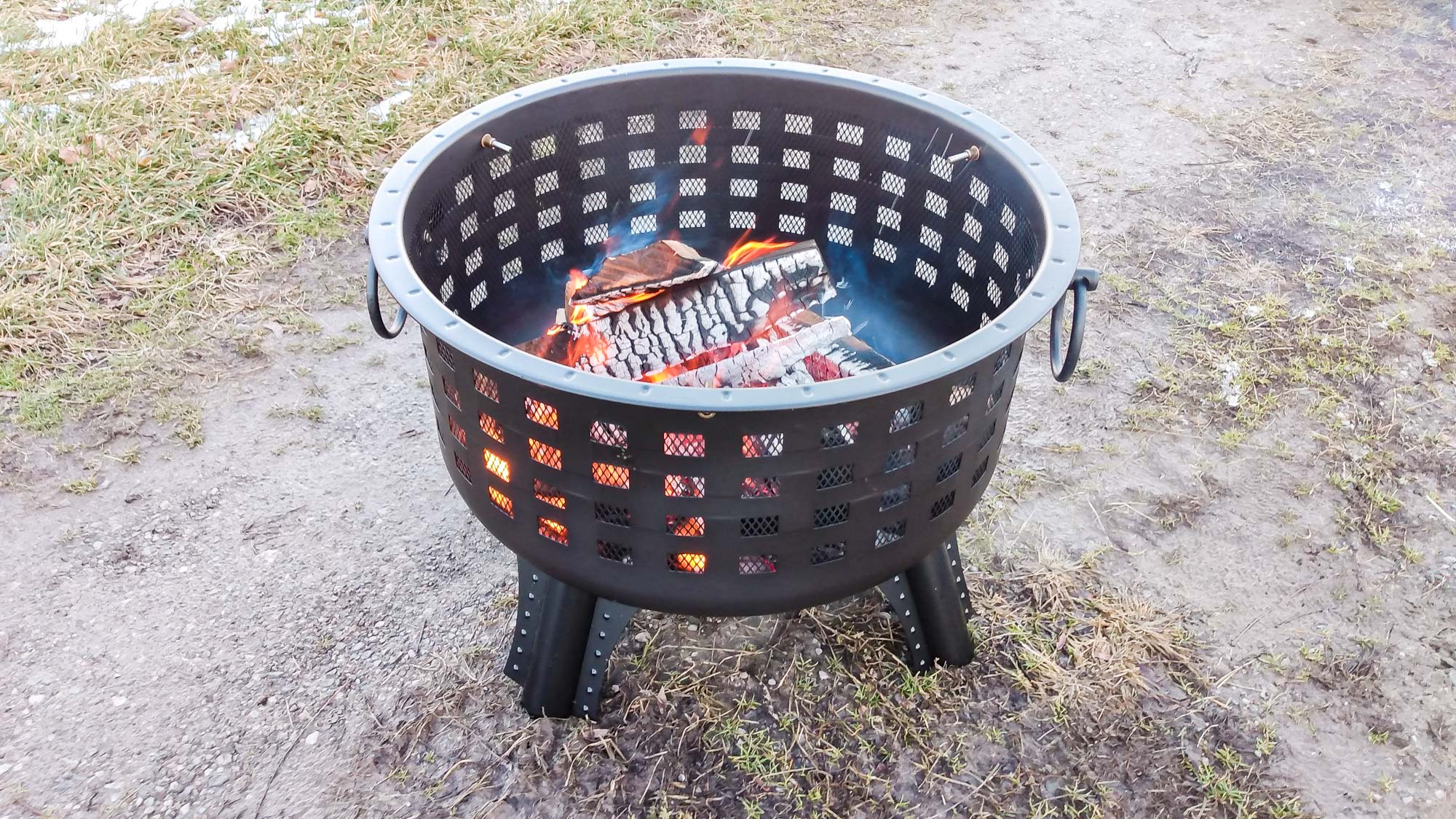
2. Amazon Basics Steel Lattice Fire Pit
Our expert review:
Specifications
Reasons to buy
Reasons to avoid
The Amazon Basics Steel Lattice Fire Pit is one of the best value fire pits Rich has tested. It features a 25.4-inch wide and 27-inch deep fire bowl with a mesh screen cover. It’s the only fire pit he's seen with designated handles, giving it a rustic, cauldron-like appearance. It has no grill, so it's a pretty basic backyard fire pit, but it’s still one of the best fire pits.
It took approximately 20 minutes to assemble and the instructions were very straightforward. Rich found the fire easy to light and produced a nice, controlled flame in a matter of minutes. The attractive lattice design combined with wire mesh allowed plenty of airflow for large fires with very few sparks. Overall, the burn time lasted about half an hour, which was similar across the other traditional fire pits of this size.
Most of the traditional fire pits Rich tested, like the Bali Outdoors 32-Inch, came with short fire screen lifting tools or pokers that were only 14-19 inches long. The Amazon Basics Lattice Fire Pit, on the other hand, came with a 3-foot-long fire poker that doubles as a screen lifter. This tool made it much easier to manage the fire at a safe distance compared to all the other fire pits. At 17 pounds, it was very easy to move around and dump out the ash.
The one main drawback of this fire pit is that it doesn’t come with any drain holes. While traditional fire pits aren’t designed to be left uncovered outside for extended periods of time, most have at least one drain hole to prevent accidental water buildup and premature rusting. Besides that one gripe, it is a great overall fire pit that is both sturdy and attractive, at a great price. It has the basics of what you need for a good backyard bonfire.
Most versatile fire pit
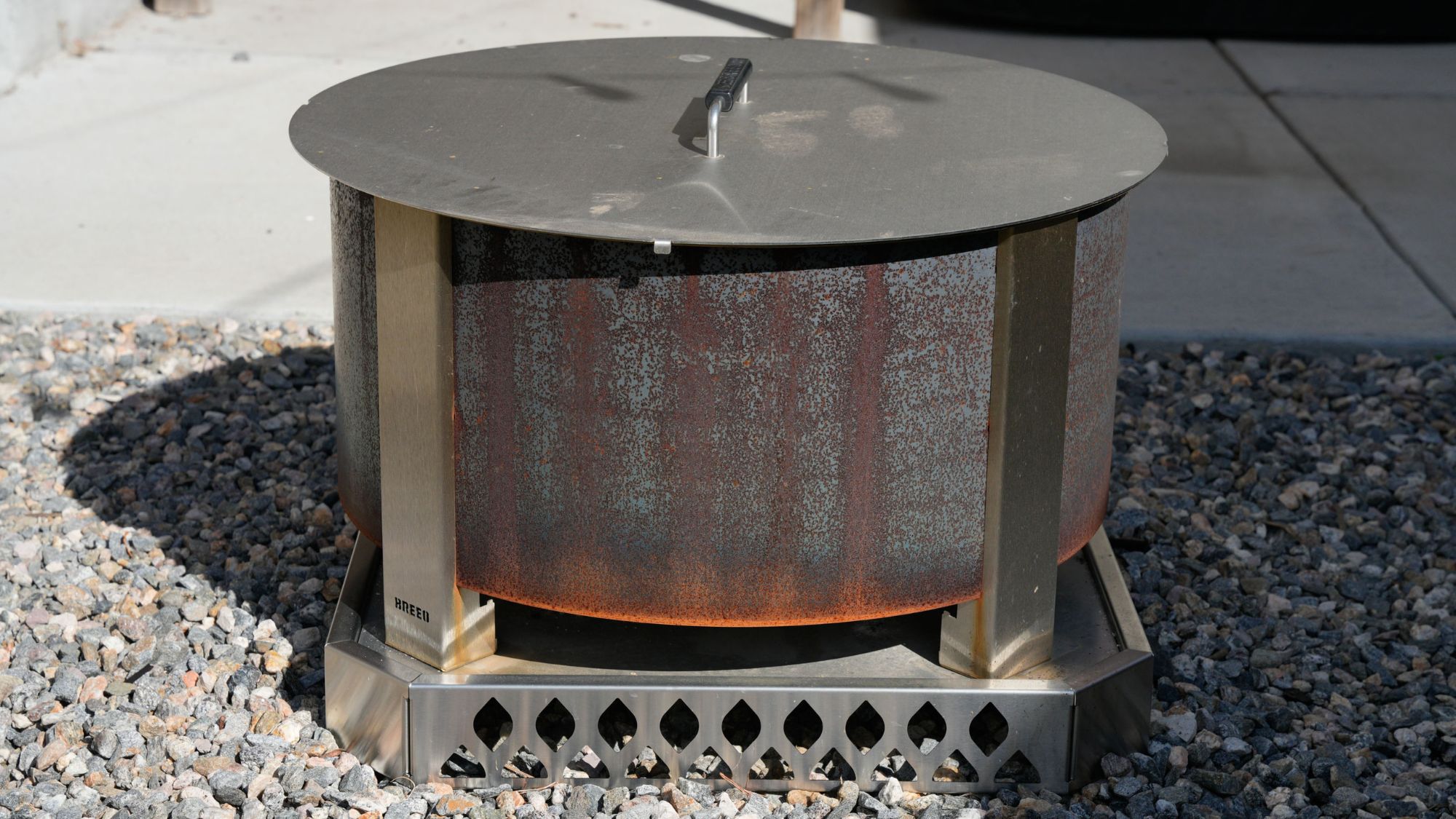
3. Breeo X24
Our expert review:
Specifications
Reasons to buy
Reasons to avoid
Breeo’s X24 Fire Pit is big, and it’s not even the biggest fire pit in the Breeo X lineup. This super solid fire pit is made for entertaining in the backyard, and thanks to its stainless and corten steel construction, it can stay right there all year round. Stainless steel resists rust, and Corten steel is designed to develop a rusty patina, which in turn protects it from the elements. If you don’t like the look of Corten steel, you can upgrade to a full stainless steel construction for an extra $200.
As such, Breeo offers a limited lifetime warranty on the X24. It’s made in the USA and ships free to your doorstep. Be sure to have a friend on hand when it arrives, because this 62-pound fire pit is heavy. That’s a great feature for sturdiness and safety, as long as you don’t intend to move it around a lot; it's more than three times as heavy as the Amazon Basics fire pit.
Breeo touts the X24 as a smokeless firepit thanks to its double-wall construction and X-Airflow design that feeds oxygen to the fire from below and directs heat up through the double walls. According to Breeo, the heated oxygen then exits through the vents at the top of the unit and re-burns, causing more heat.
The system does its job well, and the X24 throws off a ton of heat. It’s awesome in cold, snowy weather, or cool autumn nights.
But what makes the X24 truly shine is its almost-overwhelming selection of accessories. You can turn your X24 into a live fire cooking station with the Fire Pit Firemaster bundle of grill and sear plate add-ons. Alternatively, you can turn it into a gourmet pizza station with the Live Fire Pizza Oven Bundle.
You can even add a heat deflector add-on that throws the X24’s heat outward further away from the fire, warming a larger area. The X-series lid is a must-have for covering the firepit after use, preventing stray sparks, smoke, and ash.
These bundles are pricey, but their versatility is unmatched. Breeo’s accessory options outnumber those of Solo Stove, and add versatility no other brand currently matches.
The X24 is the best heavy-duty smokeless fire pit if you’re looking to build a social space in your backyard. While it’s pricey at $600, it’s on par with a similarly sized Solo Stove — but with far more versatility options and a stouter build.
Best smokeless fire pit

4. Cuisinart Cleanburn Fire Pit
Our expert review:
Specifications
Reasons to buy
Reasons to avoid
What makes the Cuisinart Cleanburn Fire Pit unique is its bowl-shaped design. While the majority of other smokeless fire pits have vertical walls, the Cuisinart Cleanburn’s convex shape gives it two advantages. First, it makes it much easier to reach in to light the fire compared to the traditional deep-cylinder design. Second, once the fire is going, its concave design radiates the fire’s heat outwards towards the user, instead of straight up. Heat could be felt sitting over 6-feet away. This made the Cuisinart Cleanburn the warmest fire pit to sit around compared to all other brands tested.
Rich found the Cuisinart Cleanburn very easy to assemble, taking only a couple minutes to figure out. Just rest the fire pit on the base and give it a quarter turn clockwise to lock it into place. The base has a useful integrated ash tray. When it’s time to dump the ashes, just twist the fire pit a quarter turn counter-clockwise and lift it off the base to reveal the ash.
However, he had to use a small hand broom to sweep the excess ash down through the holes in the fire pit, so it all ended up in the tray. At 22-pounds, there is also the option of flipping the fire pit over after removing it from the base to dump out the remaining ash and debris, which is fine, but more complicated than other similar fire pits. This convoluted method is an inconvenience compared to the Solo Stove Bonfire 2.0, but not a dealbreaker.
With a limited, one-year warranty, you definitely want to take good care of this fire pit and bring it inside after each use. Although it does not come with a cover, they are available to purchase separately online.
Overall, the Cuisinart CleanBurn Fire Pit created one of the best fire-side experiences in Rich's tests. It was easy to light, produced very little smoke and sparks once started and burned steadily for about 35 minutes. If it had a better warranty, and it was easier to clean, the Cuisinart Cleanburn fire pit could have tied for first place with the Solo Stove as the best fire pit.
Best portable
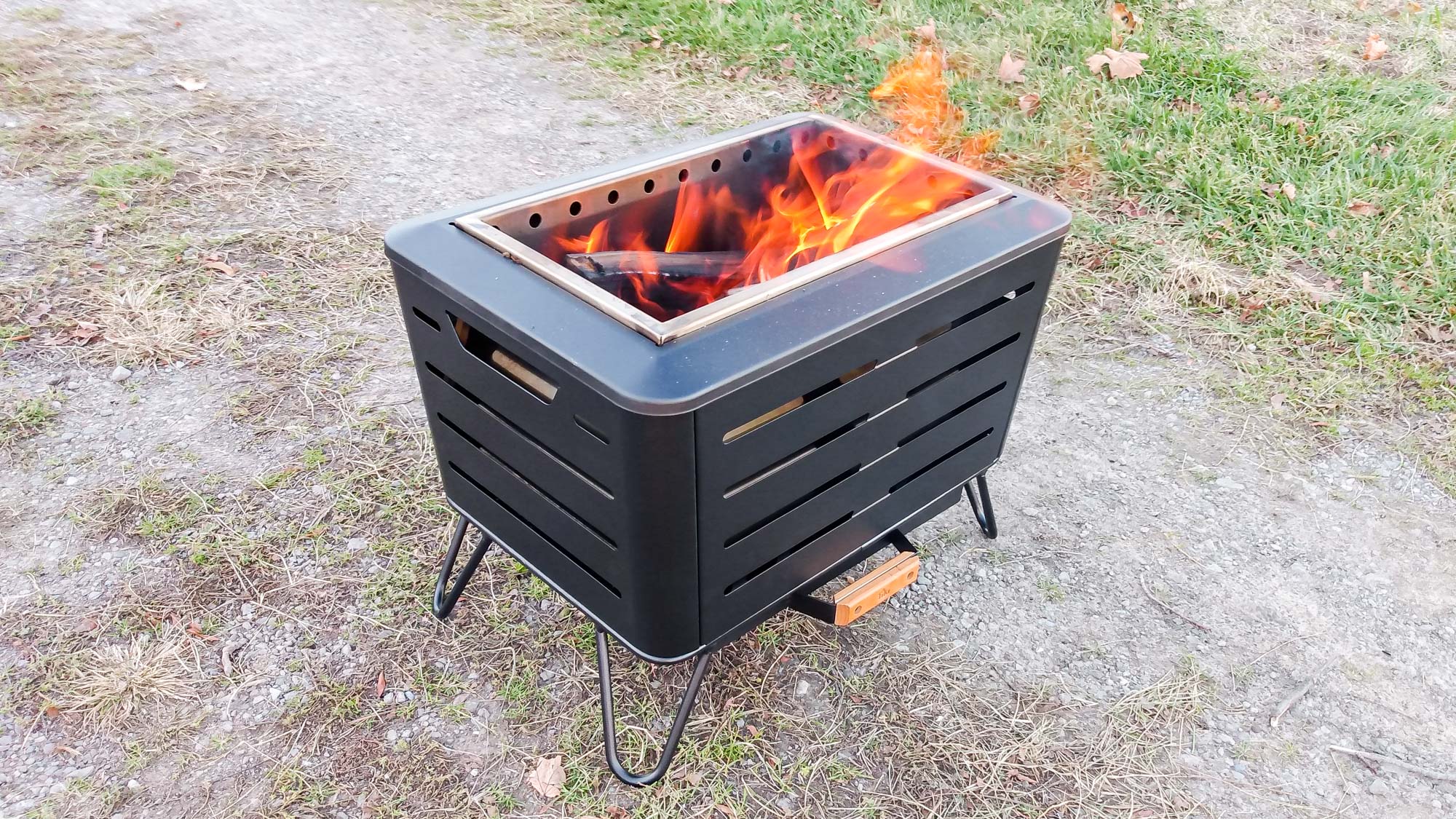
5. Tiki Brand 21.5 inch Retreat Smokeless Rectangular Fire Pit
Our expert review:
Specifications
Reasons to buy
Reasons to avoid
If you’re looking for smokeless fire pit you can take on the go, the Tiki Portable is our recommendation. It has a stylish and compact, rectangular design, a removable ash tray and convenient handles. Built with a 16-gauge stainless steel interior and powder-coated exterior, this fire pit is both durable and sturdy. On top of that, it’s easy on the eye.
The Tiki Portable had easy-to-follow instructions and took Rich about five minutes to assemble with the included hardware. It was the only rectangular-shaped fire pit tested, but it performed just as well as its cylindrical counterparts, offering a four-foot heat radius from the fire and the longest burn-time (40 minutes) of all the fire pits he examined.
It was easy to reach in and light the fire because of its width, and it produced a nice, low-smoke flame. Weighing in at 41 pounds, it is surprisingly heavy for a “portable” fire pit, but the handles make moving it easy.
The Tiki Portable features a removable ash tray, and the interior just requires a quick brush between uses to knock the ash down into the tray. You just grab the tray by the handle and it pulls right out of the unit without having to move the fire pit at all. It comes with a weather-resistant canvas cover, however, that does not mean it should be left outside for an extended period of time.
The fire pit also comes with a pack of Tiki Brand of wood pellets; just light the bag for an easy ½ hour campfire. Rich found that this fire pit worked equally well using hardwood and wood pellets as fuel. Both options burn very well, but the wood pellets felt like they produced more heat from a distance, although they didn’t burn for as long as the hardwood.
However, it was very easy to add another log or two to the fire after the wood pellets died down. Whether sitting in your back patio or camping by the lake, the Tiki Portable is a great fire pit option for people on the go.
Best with grilling rack
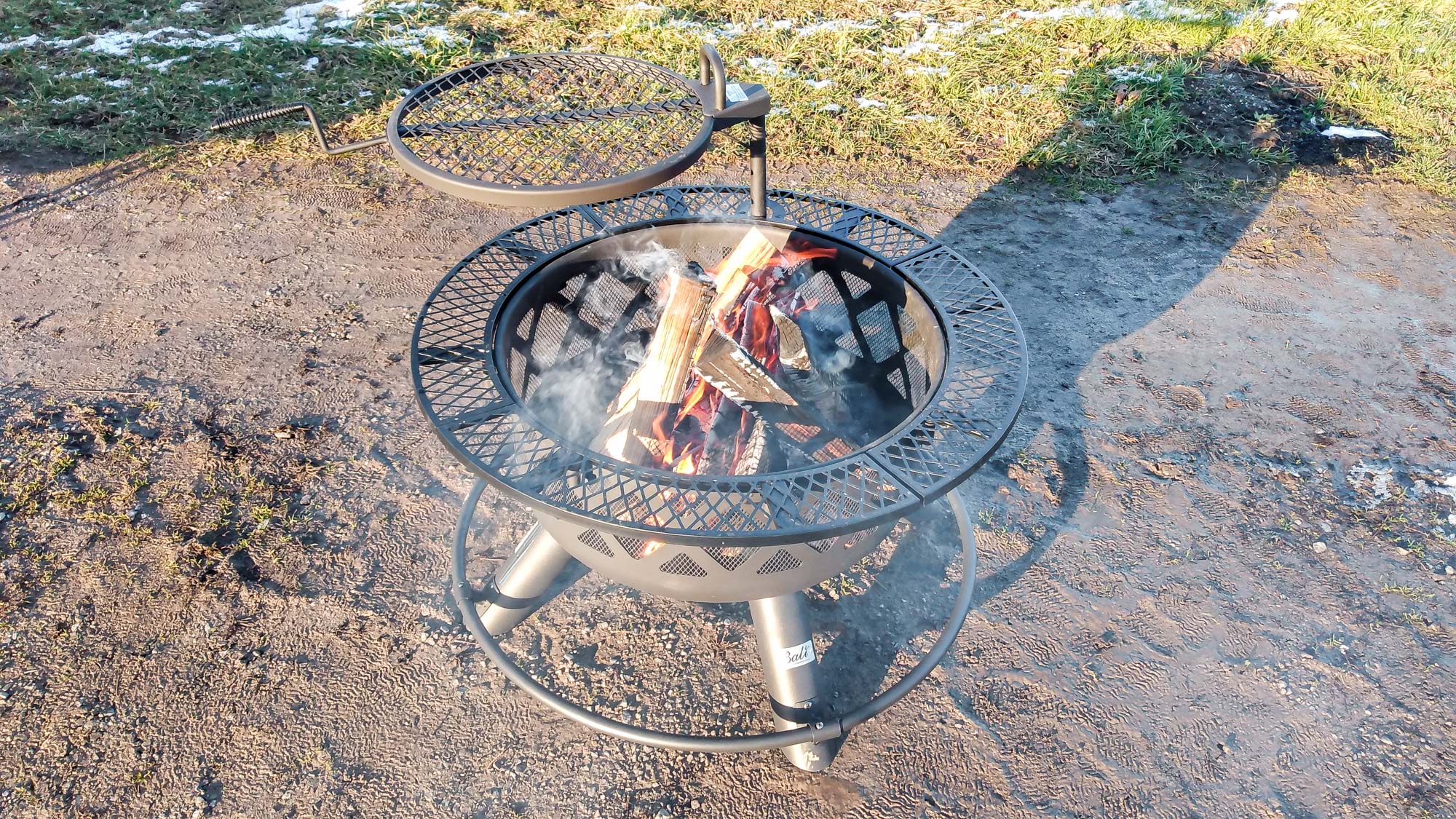
6. Bali Outdoors 32-Inch
Our expert review:
Specifications
Reasons to buy
Reasons to avoid
Rich found the Bali Outdoors 32-inch to be the best fire pit with a grill, and it comes at a great price. Its large, 32-inch diameter interior holds a lot of wood and throws a nice amount of heat to those nearby. It is solidly built, easy to use and very stable. In fact, it seemed to be the best constructed of all the traditional fire pits Rich tested. It comes with an 18-inch adjustable grill that can be swiveled into place at an ideal cooking height, and a collapsible internal log frame to make building your fire a breeze.
The Bali Outdoors 32-inch does not come with a mesh screen cover like the Amazon Basics fire pit, mainly due to its built-in adjustable grill. If you live in an area where local regulations require a screen cover for fire pits, this will likely be a dealbreaker. Rich did, however, like that that grill can be locked into place at different heights or easily removed if not required. He cooked hotdogs evenly with the grill set at the top rim level.
This fire pit had the most pieces to assemble of all the fire pits Rich tested and took about half an hour. However, it had very detailed and intuitive instructions, so it wasn’t difficult. It features a helpful ledge around the rim that works as a great safety bumper as well as a shelf to rest a mug of hot chocolate. The design also includes a ring of steel that overlaps the legs for support. This acts as an additional safety bumper, so you can’t trip over the legs while walking by. It comes with a very short fire poker. Though it works well when the fire burns down and you can get close enough, it will most likely result in singed fingers when the fire is fully stoked.
Rich liked that the fire pit has drain holes in its base in case it gets rained on. Based on reviews, the fire pit can be prone to rust, especially at the base of the bowl and the screen around the fire bowl, but that was similar across all fire pits he reviewed. It is designed to be left outdoors for the season, but rust can be prevented if it’s covered or brought inside when not in use. This fire pit was easy to light and it’s easy to build a large, controlled fire which produces a typical amount of smoke for a traditional fire pit. Overall, it provided an all-around nice fire pit experience — that’s why it’s one of the best fire pits.
Also tested
Rich selected three of the best smokeless fire pits and three of the best traditional fire pits to appear in his roundup, but there were many other hot contenders. Here are some other tested options that might be a better fit for you.
Other smokeless firepits to consider
Why you can trust Tom's Guide
Hampton Bay Piedmont
One thing that makes the Hampton Bay Piedmont stand out among other traditional firepits is that it comes with a heat shield, protecting the ground from the heat above. It also features a handy grill rack if you fancy toasty a marshmallow or two as you enjoy the flames and warmth from the heat.
Solo Stove Mesa XL
When you don't have room for a full-size fire pit — or simply want something smaller — the Solo Stove Mesa XL is a great, if pricey, accessory. The Mesa XL looks like someone shrunk a Solo Stove into a handheld model — it looks just as great, and performs just as well as the full-size versions. Plus it comes in lots of vibrant colorways, asides from Gunmetal, pictured here.
Read our full Solo Stove Mesa XL review
BioLite Firepit+
It is difficult to compare the BioLite Firepit+ because it has a different design to all the other fire pits Rich tested. Typical smokeless fire pits use passive convection to pull air into the fire pit to achieve a smokeless burn. The BioLite Firepit+ uses forced air, powered by a rechargeable blower that attaches to the side of the unit. That forced air goes into the fire pit with 51 strategically placed air jets. The BioLite Firepit+ is a great option if you’re looking for a smoke-free camping grill, but is not recommended as a primary backyard fire pit.
How we selected and tested the best fire pits
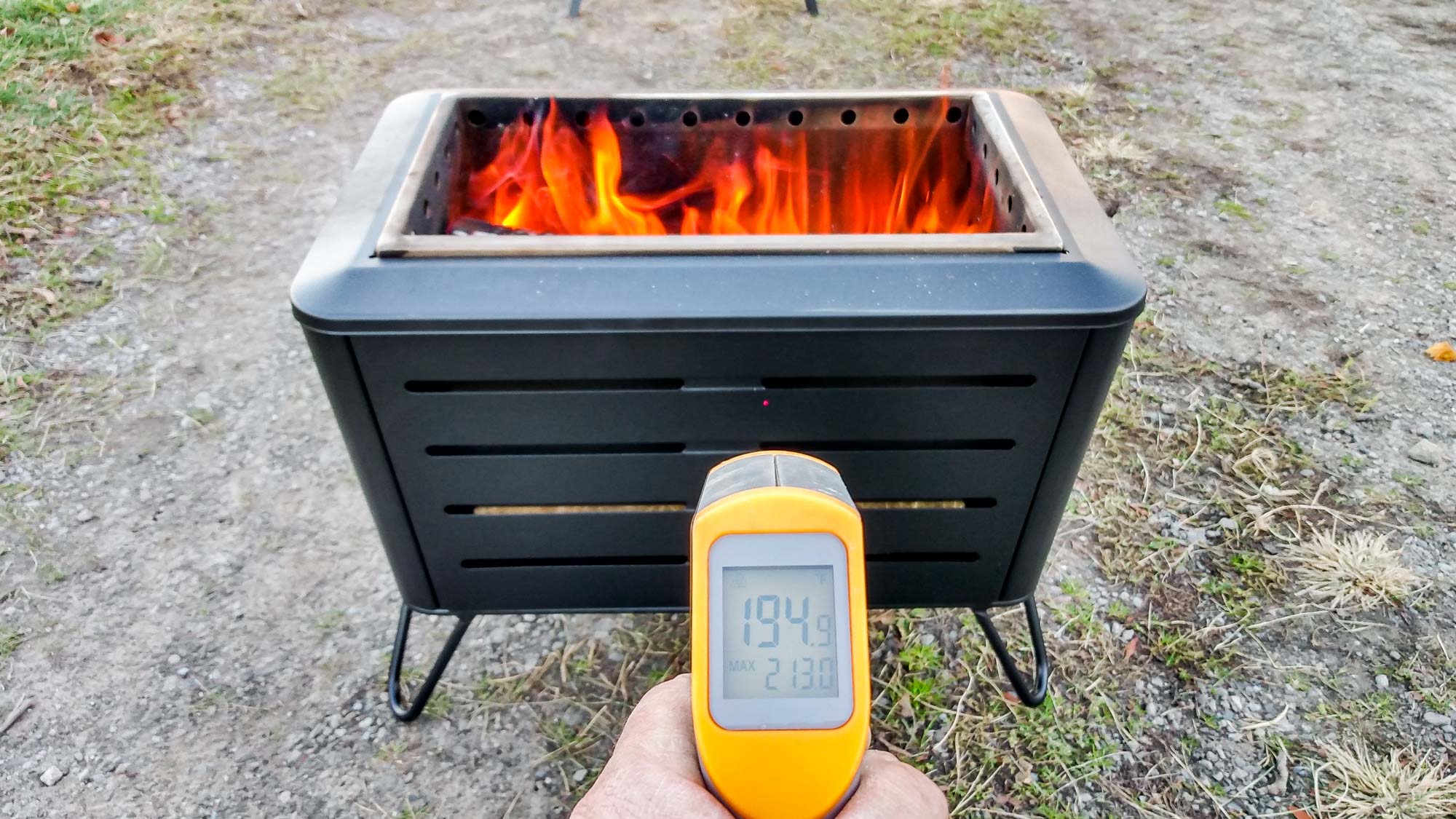
There are hundreds of fire pits available on the market. The ones chosen for this test were selected because they ranked among the highest in terms of product reviews from reputable brands and vendors. Rich wanted fire pits that were durable, aesthetically pleasing and provided a proper balance of functionality and easy maintenance.
Rich ensured each fire pit was used a minimum of three times and left uncovered outside, exposed to the Western, NY elements for at least one month. He tested every fire pit with ash wood split and cured in standard 16-inch lengths. All fire pits were started with the same fire-starting technique (crumpled-up newspaper and kindling) and the same quantity of wood. If alternate fuels, such as wood pellets were supplied, Rich tried those out too.
Rich tested the effective heat throw of the fire pits by walking towards the burning fire pit until he could feel the heat radiating from it, and he measured the distance. If a fire pit included a grill, Rich tested it out with some good old-fashioned hotdogs.
Of course, no fire pit test is complete without toasted marshmallows, and so marshmallows were toasted once on each pit. This tester’s favorite marshmallow roasting stick is a collapsible model from MalloMe ($9.99, Amazon).
What to look for when buying a fire pit
Typically, fire pits have been split into two categories – traditional and smokeless. Within those categories, there are also portable and non-portable designs. The difference between these is usually dependent on weight, the ability to collapse the body and the presence of handles or a carrying bag:
Traditional fire pits
- Made from steel and coated in a heat and rust-resistant paint
- Supported by legs that raise the fire bowl off the ground
- Some have an open, shallow design
- Others have a deep wall encircling the bowl that acts as a wind screen and a spark container — these fire pits are usually wide and heavy and create a “normal” amount of smoke
- Some have attachments for cooking food and can double up as a charcoal grill.
Smokeless fire pits
- Constructed of steel with a double-walled design with strategically placed air holes for improved airflow and less smoke
- Sit low to the ground and usually throw less heat outward when compared to traditional fire pits. Why is this different? The double-wall acts as an insulator and most of the heat is consequently directed straight up.
- Fire burns very efficiently and a little ash is usually all that remains of the wood
- The low-smoke design makes them ideal for crowded areas, where smoke can be bothersome
How to choose the best fire pit for you
Looking for convenience?
Find a fire pit that’s easy to clean. Look for ones that are either large enough to reach into with a dustpan or comes with a removable ash tray.
Are you an RV camper?
If you are just planning to use a fire pit for a few nights relatively close to your vehicle, then a portable version could be a good fit along with one of the best coolers. You can get the comfort and safety of a fire pit in a much smaller and lighter package. Some of the portable devices also double up as grills and even power sources.
Are you a hiker?
If you plan to hike into a campsite, then an ultra-portable fire pit, such as the Fireside Outdoors Pop-Up Pit offers a much safer alternative to your traditional campfire, without taking up much space in your pack.
After a grill experience?
Many fire pits can also use charcoal for a more grill-like cooking experience. The BioLite stove with electric forced air is the best all-around cooking fire pit we reviewed, although it didn't make it into our top three of the best traditional fire pits. If you want to up your outdoor cooking game beyond the traditional grilled hotdog, hamburger or chicken, Solo Stove just came out with a new pizza oven attachment for their Bonfire 2.0 stove. Plus, be sure to check out the best outdoor pizza ovens.
What is the best shape for a firepit?
A round firepit is a common choice. Similar to sitting around a campfire, round pits are ideal for emitting heat evenly around the perimeter, and will help ensure a warm seat for everyone. However, if you have a compact space, a square shape would be more suitable.
Not all fire pit manufacturers are the same
BioLite, for example, designs cookstoves and other products to make cooking safer in developing countries. Fireside Outdoor has a mission to revolutionize the campfire experience by reducing pollution and wildfires that can result from camping.
Pricing
Prices for the fire pits we tested ranged from $119 to $599. We recommend looking for a mix of durability and functionality, at a price you can afford.
The facts about smokeless fire pits
While even the best fire pits aren’t completely smokeless, smokeless fire pits are a huge improvement to traditional designs.
They are constructed of steel and have a double-walled design with strategically placed air holes for improved airflow. The air comes in from the bottom to provide the initial oxygen for the fire. Simultaneously, additional air is pulled up and heated between the double-walls of the fire pit where it exits higher up into the burn chamber and completes what the manufacturers call a ‘secondary combustion’ of the smoke and gasses that are released.
However, you should expect some smoke when you start your fire. It will take a few minutes for the fire to grow and for the air to start drafting properly. Once it does, the fuel will burn efficiently as long as the wood stays below the rim of the smokeless fire pit. Anything that sticks up above the rim smokes. As long as a good source of hardwood fuel is used and the wood stays below the rim, there is very little noticeable difference in smoke output between brands and designs.
Smokeless fire pits usually throw less heat outward when compared to traditional fire pits, as the double-wall acts as an insulator and most of the heat is directed straight up. The outer wall also does not get nearly as hot and so the user does not feel as much warmth radiating from the fire pit.
Get instant access to breaking news, the hottest reviews, great deals and helpful tips.

Camilla is the Homes Staff Writer and covers everything to do with homes and gardens. She has a wealth of editorial experience, mounting over 30 years, and covers news and features, tests products for reviews and compiles buying guides.
Her work has appeared in business and consumer titles, including Ideal Home, Real Homes, House Beautiful, Homebuilding & Renovation, and Kitchen & Bathroom Business. She’s even appeared on the cover of Your Home, writing about her own house renovation.
Although she’s obsessed with decorating her home, she also enjoys baking and trying out the latest kitchen appliances. But when she’s not inside, you’ll find her pottering about in her yard, tending to her vegetable patch or taking in her prized hydrangeas.
